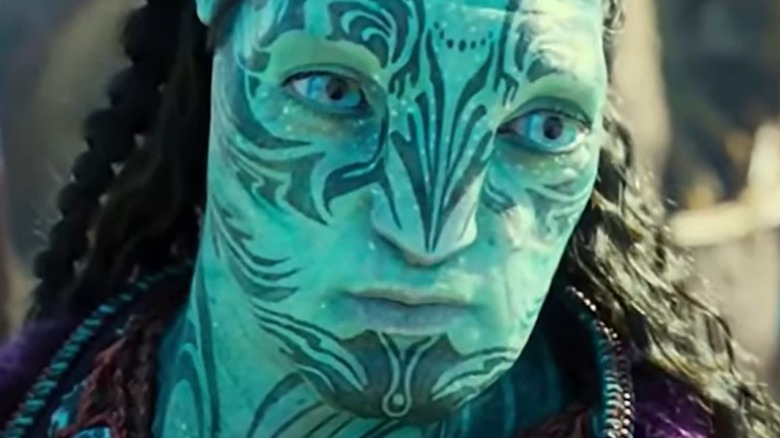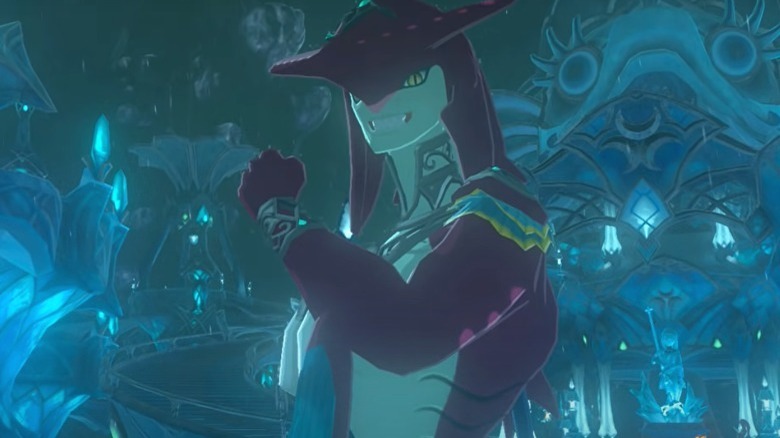James Cameron's Avatar Might Have Muddied The Waters For Nintendo's Cinematic Future
For all of the pioneering visual effects and advancements in 3-D cinematic technology, it is sometimes easy for "Avatar's" technological achievements to overshadow its story. In both "Avatar" and "Avatar: The Way of Water," writer-director James Cameron introduces audiences to the Na'vi race, which includes the debut of the Metkayina (a species of Na'vi) in the sequel film. Both movies explore their struggles against the RDA (Resources Development Administration) from Earth, and their own internal strife based on differences in their customs. Of the many different characters in "Avatar: The Way of Water," the Metkayina have strikingly dissimilar physical features compared to the Na'vi, and are also more in tune with and customized to live within the vast water world on display in the follow-up film.
Races of sea-faring people or creatures are certainly not an original idea in either literature or modern media. Even in the real world, tribes of human beings throughout history have also been strongly linked with water and the oceans, such as the Sea People, an ancient race of seafarers that lived during the Bronze Age (via Britannica). But in contemporary entertainment, any gamer could likely see a strong resemblance between Cameron's Metkayina tribe of Na'vi and the Zora sea creatures of Nintendo's "The Legend of Zelda" series. With the gaming company set to release "The Super Mario Bros. Movie" in 2023, the Metkayina may have muddied the waters for any future Hyrule cinematic adventures.
Nintendo may need to alter the design of the Zora
"The Legend of Zelda" was first released on the Nintendo Entertainment System in 1987, and retro gamers can likely recall the blue and red creature that popped out of bodies of water to attack Link. The sprite was named "Zora," and in the 35 years since its first 8-bit appearance, that character has evolved into an extensive mythology all its own.
With the release of "The Legend of Zelda: Ocarina of Time" on Nintendo 64 in 1998, the Zora tribe was introduced and has been featured in most titles in the franchise since. The Zora are humanlike in their anatomy but have typically been green in color, with strong amphibian-like facial features in addition to prominent fins exposed on their bodies. The clan of sea dwellers is considered to be the protectors of water in the land of Hyrule and beyond (per Zelda Wiki).
When visualizing the Metkayina and Zora, the anatomical features are not radically different, and even the shared values of the sea between the two are apparent. As Nintendo prepares to move into the film business with Mario, future adaptations of its other influential property now seem like a possibility. Recently, the design of the Zora folk have leaned towards a more red aesthetic over its long-running green hue, but their ethos and its close relation to "Avatar's" Metkayina could find the gaming company searching for new design patterns.

